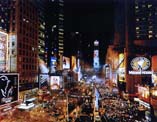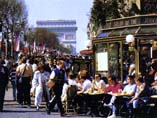The History, The Environs
Squares the world over bustle with life – a few of Berlin’s historic squares: Molkenmarkt Schlossplatz Gendarmenmarkt Alexanderplatz Pariser Platz Leipziger Platz
Redefining the concept of an urban square means integrating historical references, the square’s potential for prosperous settle-ment and its future tasks as an orienta-tion focus and a model.
The architecture of a square as the external framework and the square itself as a place where things happen complement each other and become a functional and emotional whole. In this process, traces of historic significance have an important effect on perception, memory and acceptance. Ideally, the historic square in its new design should become a place where awareness is concentrated and raised, a scene of communication in the broadest sense of the word.
A city’s squares afford unique evidence of its urbanity. All currents flow together here, in a convergence which gives birth to experience, to movement in all directions and to a lively expression of cultural dynamism. A square can spawn moods and radiate identification. A square has a personality of its own, but it also combines its effect with the city’s. Historically, investing a square with a religious motif or giving it a claim to dominance was a significant factor of the square’s importance. The in-habitants of a town, individually or in masses, were always welcome here to pay their homage. Nowadays, consumption is the new orientation of city life. Tomorrow, barriers will be overcome by information technology, new visions opened up. The square constantly reinvents itself with a variety of vital, intellectual and analogous impulses.
Historische View to the Leipziger Platz
Rome, Forum Romanum military power 1st century
Paris, Arc de Triomphe national commemoration 18th century
London, Piccadilly Circus the crown 19th century
New York, Times Square commerce 20th century
Berlin, Leipziger Platz culture and experience 21st century
 |
 |
 |
